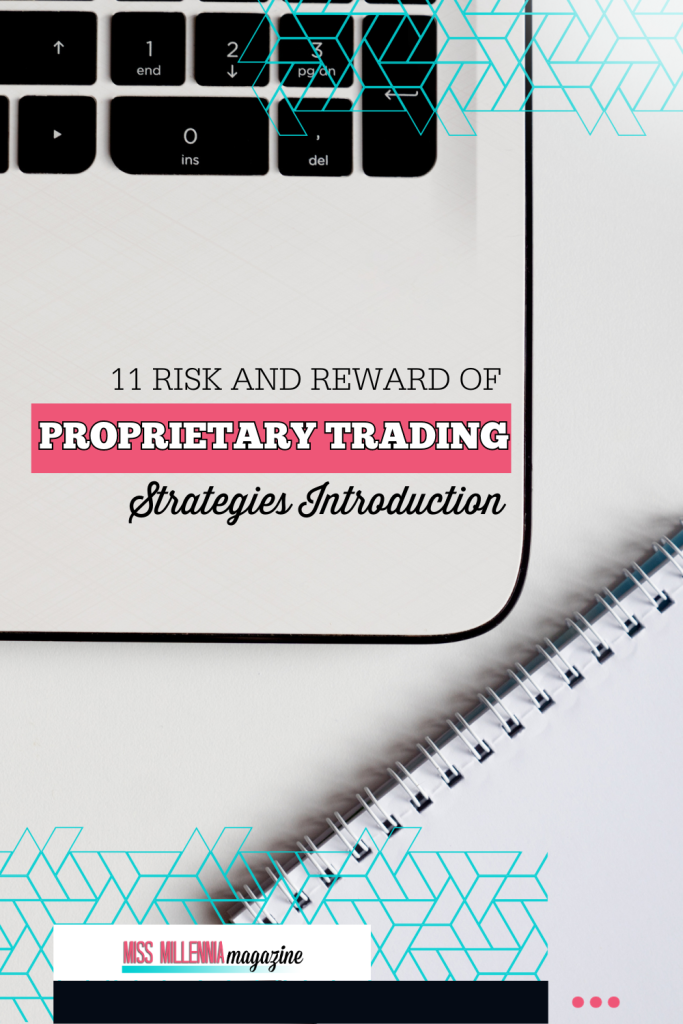11 Risk and Reward of Proprietary Trading Strategies Introduction

Proprietary trading has become increasingly popular in the markets. Many traders are attracted to this approach because it offers the potential for profits and greater control over their trades. However, it’s essential to recognize that along with rewards, there are risks involved. This blog will detail Proprietary trading strategies, examine their troubles, and discuss ways to navigate them.
Understanding Trading
Proprietary trading or prop trade is where traders utilize their employer’s capital to trade financial instruments, like stocks, bonds, derivatives, or currencies. Unlike forms of trading that involve using client’s funds, prop traders work with their firm’s money.
Different Types of Proprietary Trading Strategies
Firms employ various prop trading strategies that focus on markets and methodologies. Here are two examples:
Scalping
Scalp traders aim to profit from price fluctuations by executing trades within short timeframes. This strategy heavily relies on analysis tools and indicators to identify optimal entry and exit points.
Day Trading
Day traders buy and sell securities within a market session; they close all positions before the market concludes for the day. They search for highly liquid assets with fluctuating prices throughout the day, aiming to make quick profits based on short-term price movements.
Following Market Trends
Market trend followers aim to identify and ride trends for extended periods. They typically use analysis tools like moving averages, trend lines, and momentum indicators to confirm trends before making trades.
Taking Advantage of Discrepancies
Statistical arbitrage involves exploiting price differences between related securities within a specific market sector or index. Traders rely on models that analyze data patterns to predict future patterns for paired securities.
Emulating Successful Investors
Coattail investing revolves around following the lead of fund managers or institutional investors who have invested in specific stocks. Traders analyze filings and monitor these investor’s portfolios to identify potential winners.

Risk Management in Proprietary Trading
When trading with a firm’s capital, proprietary traders must effectively manage the risks associated with their strategies. Implementing risk management practices is crucial for long-term success. Below are aspects of risk management for traders:
Capital Requirements
Proprietary traders need reserves to cover losses during adverse market conditions. Proper allocation of capital is vital to withstand drawdowns without facing consequences.
Determine Size
Determining the size of positions is crucial when managing risk exposure. Traders should consider factors such as their account size, risk tolerance, market volatility, and the likelihood of success before initiating any trades.
Exiting Trades
Stop-loss orders act as a safety net by exiting trades when they reach a predetermined price level. By setting stop-loss orders, traders can limit losses during market movements.
Trading Diversification

Diversifying trading activity across asset classes or markets can reduce the impact of asset performance on overall portfolio returns. This strategy spreads risks and increases the chances of finding opportunities.
Reward vs. Loss
Evaluating the reward compared to the loss for each trade or investment is essential for effective risk management. A favorable risk-to-reward ratio cushions against losses and improves profitability over time.
Staying Updated
The financial markets are constantly evolving, so traders must stay updated with trends, techniques, and regulations. Ongoing learning and adaptability give traders an edge and help mitigate risks associated with outdated strategies or perspectives.
Conclusion
Proprietary trading can be advantageous despite its risks if approached strategically with risk management practices in place. Understanding your chosen trading strategy and implementing risk management procedures is crucial to achieving long-term success as a prop trader. Remember that discipline, patience, and continuous learning are vital in mastering this potentially profitable trading approach.






